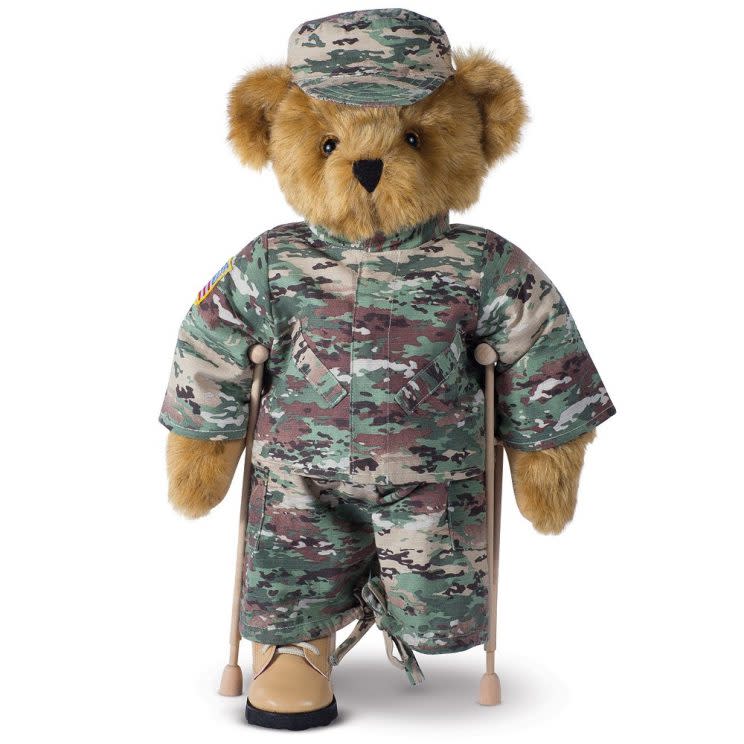Toy Company Now Sells Bears That Embrace Physical Differences

It’s important for children to play with toys that represent themselves in some way, experts say. But the latest company to make this possible doesn’t make toys that look like people at all, actually. The Vermont Teddy Bear Co. unveiled its Limb Loss & Limb Difference Bears this week, featuring stuffed bears that are missing arms and legs.
“Occasionally, we would have a request for a bear with limb loss, but this is our first time officially introducing a bear with limb loss,” Vermont Teddy Bear product designer Cassandra Clayton told Vermont station NECN.
Customers can choose which limbs are missing and whether they are gone above or below the elbow or knee, much in the same way they choose their outfits. A fifth of the proceeds from the Limb Loss & Limb Difference Bears will be donated to the Amputee Coalition. The bears went on sale Thursday, as we near the end of Limb Loss Awareness Month. According to the coalition’s site, every day 500 Americans undergo an amputation, and as many as 1,000 babies per year are born with a limb difference.
These bears join other big toy brands that are giving kids differently abled options. American Girl has doll versions with cochlear implants and missing hair. It’s impossible not to delight in these videos of girls receiving dolls with prosthetic limbs like them. Lego released its first figurine with a wheelchair last summer.

Advocates for the disabled want this trend to keep going, not just for the kids with underrepresented bodies, but for their peers too.
“It’s about these brands sending out a powerful message that everyone should be included and celebrated, not just able-bodied people,” states the website Toylikeme.org. “If we leave diff-ability out of the toy box, what does that teach kids in real life? That it’s OK to exclude?”
Read more from Yahoo Style + Beauty:
• Woman Has Super-Scary Allergic Reaction After Getting Hair Dyed
• A Mom Is Suing Her Transgender Daughter for Transitioning From Male to Female
• Hundreds of Girls Were Sent Home From School Because of Their Skirts
Follow us on Instagram, Facebook, and Pinterest for nonstop inspiration delivered fresh to your feed, every day. For Twitter updates, follow @YahooStyle and@YahooBeauty.

